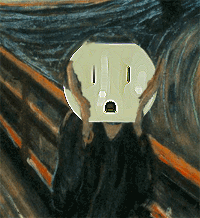 My first impulse is to compare Third Rail Mobility’s new Smart Battery and Slim Case to Mophie‘s Juice Pack, the best-known name in iPhone battery cases.Third Rail’s system does, indeed, provide an alternative way to extend an iPhone 4’s battery life. But this clever system goes way beyond that. I tried a review unit provided by the company.
My first impulse is to compare Third Rail Mobility’s new Smart Battery and Slim Case to Mophie‘s Juice Pack, the best-known name in iPhone battery cases.Third Rail’s system does, indeed, provide an alternative way to extend an iPhone 4’s battery life. But this clever system goes way beyond that. I tried a review unit provided by the company.
The case itself looks pretty much like any nice two-piece snap-on black iPhone 4 case, except:
- The section below the dock connector is a bit taller than usual and sports a Micro USB connector;
- There’s an area on the back with electrical contacts.
The contacts on the case’s back are there because you can connect the battery there like a backpack. It’s a 1250 MaH unit, so it should come close to doubling the standard life of the iPhone’s own 1420 MaH battery. You can simply use the phone with the battery in place–it looks a little strange, but I found it comfortable enough in the hand–or attach the battery only when you need it, such as when the iPhone’s own battery is about to croak.

 During the 1890’s, inventor
During the 1890’s, inventor 
 Imagine that you could charge a car battery as quickly as you fill up a tank of gasoline today. Stop imagining –it has become possible. Researchers have
Imagine that you could charge a car battery as quickly as you fill up a tank of gasoline today. Stop imagining –it has become possible. Researchers have